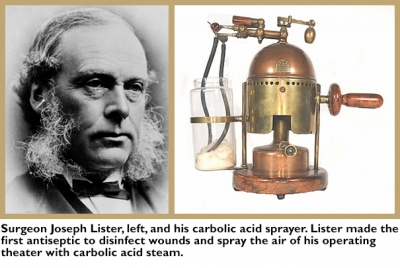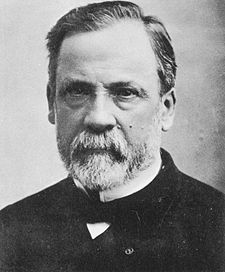
- Clinical thermometer:
- Nineteenth- century doctors knew that a patient’s body temperature was a good guide to their health.
- Until British physician Thomas Allbutt invented the clinical thermometer in 1866, there was no convenient way of measuring it.
- The only thermometers available could take 20 minutes to give a reading, and some of them were 30 cm (12 inches) long.
- Allbutt reduced them to a pocket-sized instrument, which was not only more convenient to handle but also worked much faster.
- He usually put his thermometer under his patient’s arm, not in their mouth.

- Antiseptics:
- Hungarian doctor Ignaz Semmelweis made his boss upset by telling medical students at Vienna’s maternity hospital to disinfect their hands.
- Although he proved that this made giving birth less dangerous, he was sacked in 1849.
- Even after 1864, when Louis Pasteur’s germ theory was accepted in France, most surgeons still did not even put on clean clothes before an operation.
- In 1865, Scottish surgeon Joseph Lister sprayed carbolic acid, a powerful germ killer, around his operating theatre and on to dressings, and things began to change.
- Lister’s idea led to the era of modern, sterile surgery.

- Pasteurization:
- Pasteurization got its name from the great French scientist Louis Pasteur, who was the first person to show that invisible organisms can spoil food and cause disease.
- He invented the process in 1865.
- It makes liquids hot enough to kill any harmful organisms without destroying their food value.
- For example, milk can be pasteurized by being heated to 630C (1450F) for 30 minutes, then quickly chilled for storage.
- Although pasteurization increases food safety, some people prefer untreated dairy products from disease-free cows.
